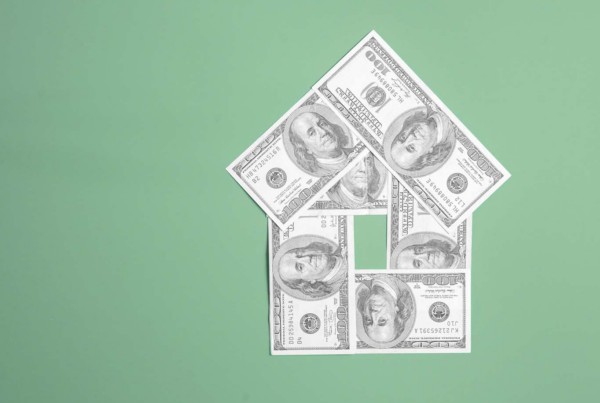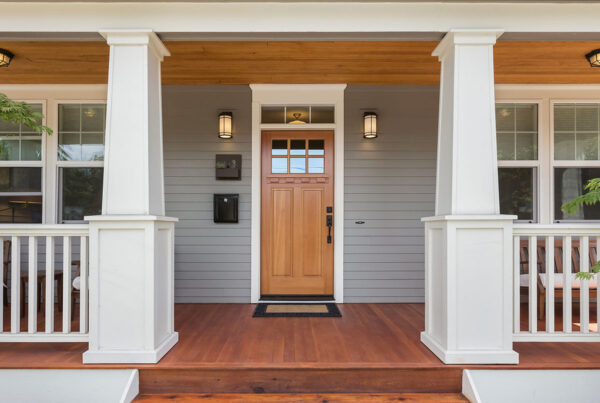As you explore different mortgage options for your home purchase or refinance, you’ll frequently see loans that are described as fixed-rate or adjustable-rate. This refers to the interest rate for your mortgage, and can greatly influence your monthly mortgage payments, as well as how much interest you pay over the life of the loan. One of the biggest decisions you’ll need to make when deciding on a loan is whether you want a fixed-rate mortgage or an adjustable-rate mortgage, which is also frequently referred to as an ARM. One is not necessarily better than the other; it is an individual choice based on preference and your unique financial situation. We’re here to help you make an informed decision based on what works best for you by exploring how these loans differ from each other.
Fixed-rate mortgages
Fixed-rate mortgages are the most popular and give borrowers the opportunity to lock in their interest rate and keep it the same throughout the duration of the loan. Regardless of whether market rates fluctuate, and whether they dip or increase, the rate for an individual’s fixed-rate mortgage will always remain the same. This offers stability and consistent monthly payments, which give borrowers peace of mind because they know exactly how much to budget for each month. If you’re obtaining a fixed-rate mortgage when rates are favorable and you qualify for the best available rate, it also gives you the opportunity to lock in that terrific rate. The downside of fixed-rate mortgages is that rates can always drop even more in the future, and your current rate would remain unchanged. However, borrowers would have the option to refinance in the future if this does happen.
Adjustable-rate mortgages
For those who don’t mind fluctuating monthly mortgage payments due to interest rate changes, an adjustable-rate mortgage may be the way to go. Because these loans often start off with interest rates that are lower than currently available fixed-rate mortgage rates, it can give borrowers the opportunity to purchase a more expensive home. However, because these rates will change based on the overall market index rate, ARMs have the potential to have higher rates than what they initially started off with. Additionally, because rates do change, the unpredictability can be stressful for some borrowers. Some adjustable-rate mortgages will have a rate ceiling that caps the interest rate at a specific number.
Hybrid ARMs
A potentially good compromise between a fixed-rate mortgage and an adjustable-rate mortgage can be a hybrid ARM. With these types of loans, borrowers will have fixed rates for a set period of time, and will then be subject to fluctuation after that initial fixed-rate period. Because ARMs do combine adjustable-rate periods with upfront fixed periods, in a way, all ARMs can be classified as hybrid ARMs.
There are several different possibilities and combinations for hybrid ARM loan terms, and each term contains slightly different rates. Additionally, because the adjustable interest period varies with each loan, the loan term you choose will determine what your monthly payments are and the amount you pay in interest over the life of the loan. Some of the most popular hybrid ARM options today include:
10-year ARMs (10/6 or 10/4)
If you’re looking for an ARM option that more evenly divides the life of your loan between a fixed-rate mortgage and an adjustable-rate mortgage, a 10-year ARM can be a good choice. These loans provide fixed rates for the first 10 years of the mortgage, or one-third of the total life of the loan, and then convert to adjustable-rate mortgages for the remaining 20 years. Interest rates during the fixed-rate period will be higher than other hybrid ARMs, but can be lower than what would be available for a fixed-rate loan. If you plan to stay in your house for less than 10-years, a 10-year ARM may be a good option.
7-year ARMs (7/6 or 7/1)
Many borrowers find that 7-year ARMs are a good compromise between 5-year and 10-year ARMs. You can still receive a better rate during the fixed period compared to a 10-year ARM, but you aren’t taking on an adjustable-rate as long as you would be with a 5-year ARM. In a 7-year ARM, the rate is fixed for the first seven years of the loan.
5-year ARMs (5/6 or 5/1)
5-year ARMs have lower rates for the first five years of the loan than a 7 or 10 year ARM. These mortgages also tend to have lower rates than a fixed-rate mortgage during the initial five-year period. If you take out a 5-year ARM or any ARM product, you have the option of refinancing before the fixed-rate period is over. The risk is that if rates rise then you would be refinancing into a higher rate loan.
Choosing a fixed-rate mortgage
Fixed-rate mortgages are a good fit for borrowers that prefer stability and like to plan out their finances.
Fixed-rate mortgages are a great choice for homebuyers that are planning on staying in their home for the long haul. If you lock in a favorable rate and you don’t plan on selling for many years, a fixed-rate mortgage is usually the more suitable choice. In addition, with rates at near-record lows, we currently recommend fixed-rate mortgages for most homebuyers. That may change if rates increase back to normal levels.
Choosing an adjustable-rate mortgage
For a lot of first-time homebuyers, their first home is their starter home and not their forever home. If you know from the beginning that you’re going to move in a few years, and/or you can handle higher mortgage payments if interest rates increase, an ARM can be a suitable choice. Adjustable-rate mortgages can also be good for younger first-time homebuyers who are just getting established in their careers and working on their savings. The lower rates in the fixed-rate period can enable them to save faster.
In some situations, an adjustable-rate mortgage can make a big difference when choosing a home to purchase. The upfront savings through this type of loan can give some homebuyers the opportunity to purchase the home they really want and without making sacrifices they might regret later on.
Deciding which loan is the right choice
Although there are pros and cons to an adjustable-rate versus a fixed rate, it is ultimately up to you to decide the best option. Contact Filo Mortgage today to learn more about fixed-rate mortgages and adjustable-rate mortgages, and which one would be best suited for you. If you’re still on the fence as to what mortgage is your best option, we are happy to discuss the options with you in further detail.








